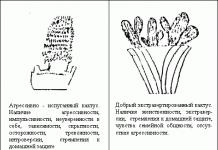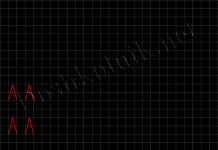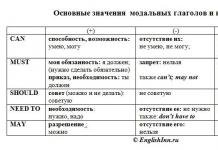Language as a sign system among sign systems
Human language is not the only system that allows living beings to communicate with each other. In addition to articulate speech, people also use other means of communication: audio, written, visual. Such means are called auxiliary
The difference between human language and other sign systems lies in its universality. Other systems are limited in their application. They are a set of signals that include certain reflexes necessary to resolve the condition, but they do not have a separate meaning.
The language that a person uses in everyday communication is not only a historically established form of culture that unites human society, but also a complex sign system. Understanding the sign properties of a language is necessary in order to better understand the structure of the language and the rules for its use.
The language system is very different from other sign systems.
The specifics are as follows:
1. Language - arises spontaneously, naturally and develops historically. Other sign systems are created artificially. They do not develop, but change by agreement. The language is not contractual in nature.
2. Language is primary in relation to other sign systems, cat. are created on its basis.
3. Language is multifunctional. Other sign systems are single-functional.
4. Language is universal in its function, other sign systems are situational
5. Language is a tool of cognition and thinking, and other language systems do not have such specificity.
6. No language system, except language, has such complexity and multi-tiered hierarchical relationships between level units.
Consequently, Language is a semiotic system, but a special kind of system. She's a little out of touch.
Language is an intermediary between man and other semiotic systems. This means that with the help of language, these systems are taught, the creation and abolition of individual signs, as well as the introduction of a system and the termination of its operation.
The language system is used by all speakers of a given language, and any speaker can be both a creator and a recipient of signs. Whereas in other semiotic systems this is not the case.
Language as a universal system of signs and as a mediator has the following qualities:
1. Language has the ability to self-describe, because there is no other semiotic system that describes it.
2. The language is accessible to everyone, so its material should be simply organized and always ready for use.
Each author language sign must create a sign in such a way that its audience can determine as accurately as possible how the sign was created. The number of signs of language, due to its intermediary role and universality, should not be limited.
Information is recorded on a material medium using signs and sign systems. There is a special scientific discipline - semiotics(from the Greek semeion - sign, sign), which studies the nature, types and functions of signs, sign systems and human sign activity.
These questions have interested philosophers and linguists since ancient times, starting with Plato and Aristotle. The term “sign” was introduced into scientific circulation by the English educator John Locke in late XVIII century. An important role in the development of the science of signs was played by German scientists - philologist Wilhelm Humboldt and logician G. Frege, Swiss linguist Ferdinand de Saussure, as well as American mathematician Charles Peirce, who proposed the name itself new science- semiotics.
What are signs and sign systems?
The concept of a sign, along with the concept of information, refers to fundamental scientific philosophical categories, since a person not only uses signs, but also lives in a world of signs.
Sign- this is a material object (thing, physical phenomenon, image, symbol, word, etc.) that serves to replace any other material or ideal object or object. In this case, the object or phenomenon replaced by the sign is called denotation(from Latin denotatus - designated), and a mental image, an idea of a given object or phenomenon - concept(concept, meaning, sense). The name of an object or phenomenon accepted in human society - Name(word, symbol).
The shape of a sign can be different - either similar to the designated object or have nothing in common with it.
One of the first classifications of signs was proposed by C. S. Pierce, who divided all signs into three groups:
- - iconic- qualitatively or structurally similar to the designated object (paintings, drawings, photographs, as well as diagrams, diagrams, drawings, etc., i.e. logical iconic signs reflecting the analogy between the relationships of parts in the object itself and its sign);
- - indexical- having certain cause-and-effect relationships with an object or phenomenon (smoke from a fire, weather vane, compass needles, etc.);
- - symbolic- associated with the designated object by agreement between the participants in the communication process.
The very form of iconic and indexical signs allows even an addressee unfamiliar with them to guess their content. In contrast, symbolic signs in their form do not give any idea about the object, object or phenomenon they represent, since they have nothing in common with it. These can be letters, numbers, dots, lines, holes, etc. For example, the addition sign “+” has nothing to do with the arithmetic operation it denotes. Therefore the connection symbolic signs with the object or phenomenon they replace is determined by a special agreement between people, stipulating the use of the corresponding icon to convey this meaning. By the way, it has long been noted that animals, just like humans, are quite capable of acquiring iconic and indexical signs. However, the system of symbolic signs is not available to animals.
In semiotics there are many other classifications of signs used in social communication. For example,
by the way of perceiving the designated object the whole variety of signs is divided into visual, auditory, tactile, olfactory and gustatory. In human communication, including documentary, mainly the first three types are used. Thus, visual and auditory signs include linguistic signs (in written and oral form, respectively). For blind people, the most important signs are tactile ones.
According to the method of implementation signs are divided into momentary (unstable) and long-term (stable). Instant ones, which are acts of action in real time and disappear immediately after use, include, for example, spoken words, while written words are stable signs, although not always. For example, what is written on water can last no more than 50 femtoseconds (1 femtosecond is equal to 10 -15 seconds). Hence the well-known saying: “the water is written with a pitchfork,” that is, something indefinite that disappears as quickly as ripples on the water.
According to the structure There are simple (elementary) and complex signs.
In document science, limited to the sphere of document communication, not all signs are used, and therefore, its own classification of signs is necessary. The entire set of signs used in the process of creating documents can be divided, first of all, into linguistic(signs of natural and artificial languages) and non-linguistic(iconic, emblematic) signs, which include works of painting, photographs, films, trade and company emblems, etc.
Among linguistic signs, the vast majority are symbols. However, languages also have words that are similar to designated objects and phenomena (that is, essentially iconic signs). These, in particular, include onomatopoeic or sound-depicting words (ideophones): cuckoo, thunder, squeak, slurp, i-go-go, meow-meow, br-r-r and others.
Some linguistic signs, by analogy with gestures, are sometimes classified as indexical, for example, personal and demonstrative pronouns, as well as individual pronominal words (I, you, this, here, now, etc.).
In social communication, as well as in documentation activities, as a rule, not individual signs are used, but their associations, which are called sign systems(for example, musical notation, chess notation, monetary system, etc.). The combination of signs is based on several criteria: common functions, similarity of forms and similarity of structures.
The sign system includes the following components:
- - a set of elementary signs, relationships between them;
- - rules for combining them;
- - rules for using signs when transmitting information.
Hence, the power of any sign system is determined by the number of elementary initial signs, the number and complexity of the relationships between them, the number and variety of rules for their use.
A combination of signs is also, in turn, a sign, but a compound or complex sign. For example, words and sentences made up of individual letters of the alphabet are complex composite characters. Likewise, any text written in any natural language is a complex sign.
The relationship between signs is studied by a special branch of semiotics called syntactics. The relationship between signs and designated objects is studied semantics, and the relationship between a sign and a person is pragmatics.
If a sign system is ordered by a set of syntactic, semantic and pragmatic rules, it forms language. Languages appeared in the process evolutionary development human society and its gradual development of the information space as linguistic means of information interaction. That's why language is a historically developed system of signs, i.e. language is not just a code, but a code with its history. Language is necessary for the mental division of the world around us into discrete concepts and for the classification of these concepts.
The whole variety of languages is usually divided into:
- natural languages, that arose spontaneously at a certain stage of the development of human society (Russian, English, Chinese, etc.);
- artificial languages, specially developed by man for specific purposes (mathematical language, programming languages, information retrieval languages, etc.).
Strictly speaking, natural languages are in fact also artificial, that is, created by people. They are only conventionally called natural in order to distinguish them from languages created for specific purposes. Moreover, its most developed, perfect form natural languages are achieved only through the process of their transformation into written languages.
According to the fair statement of Yu. M. Lotman, in any human culture, every nation there is not one, but at least two languages, for example verbal and visual. As development progresses, the set of semiotic communications expands due, first of all, to artificial languages.
Any natural language can be considered, first of all, as a set of words that have certain relationships with each other (vocabulary and grammar). The relationships that exist between words (signs) in a sign system are called paradigmatic. These include, in particular, synonymy, homonymy and others. Homonymy- this is a phenomenon in which signs denoting completely different objects can coincide. For example, in Russian there are two different words, having the same spelling: “props”. These are homonym words, one of which denotes a set of objects for some kind of performance, spectacular production, the other - an element of document design.
Unlike natural languages, there is practically no homonymy in artificial languages. There, as a rule, each sign corresponds to one meaning, and the meaning corresponds to one denotation. Homonymy is especially unacceptable in algorithmic languages, since machine processing of program text requires a very specific interpretation of each character 1 .
Synonymy it is often found in both natural and artificial languages. Its essence is that sometimes two different signs correspond to the same denotation.
In the process of communication, sign systems can interact. For example, when preparing a document, along with natural language signs, signs can also be used mathematical language, cartographic, musical symbols, etc.
1 Ageev V. Semiotics. M., 2002. P. 52.
A science called . The range of phenomena studied by semiotics includes sign language, maritime semaphores, road signs and many other phenomena, but among them the most widespread and most deeply studied is language. Usually people perceive language as a product of human culture, uniting society and being the outer shell of thinking, without which it is impossible to understand human thoughts. But, in addition to this, language is also a system of certain signs interacting with each other, agreed upon by the rules of syntax.
In order for any phenomenon to be considered as a sign system, it must have a certain set of symbols that replace the function of the object, point to it, but do not coincide with its material characteristics. These signs must be material, that is, accessible to perception. The main function of a sign is to convey meaning. Since the basic unit meets all these requirements, the language is a sign system.
But semiotics treats it a little differently than other sign systems, highlighting it specific features. Firstly, unlike other symbol systems, language develops independently, spontaneously. Despite the fact that humanity in general or its individual groups take part in the development of language, it is formed naturally, and does not change according to certain rules adopted as a result of an agreement.
There are artificial languages created intentionally for communication, but when used by people for this purpose, they begin to develop and improve spontaneously.
Secondly, all other sign systems, which are distinguished by their artificial creation, were formed on the basis of natural language, that is, they are secondary. In addition, language performs several functions at once and has much more complex and multi-layered relationships between signs.
Language is the only sign system with the help of which a person learns other similar systems.
Aspects of language as a system of signs
Semiotics studies language under three main aspects: semantic, syntactic and pragmatic. Semantics deals with the study of the meaning of signs, that is, their content, which is understood as any objects (objective meaning) or phenomena (conceptual meaning) in the minds of people. In the sign system of language, this meaning is virtual, it does not relate to a specific situation and does not denote a specific phenomenon, but in speech the sign, that is, the word, becomes real.
Syntax studies the rules for combining characters with each other. Any language is not a chaotic set of signs. Words are combined with each other according to certain rules, their arrangement affects the final meaning. The rules for constructing phrases and sentences among themselves are called syntactic.
Pragmatics explores the ways of using language in certain situations: how the meaning of a word-sign changes depending on the time, place of its use, and those who use them. The pragmatic aspect of semiotics considers not only the content of language, but also its design.
Language- this is a certain real sign system used in a certain society, in a certain space. Language – This is a sign system. Matter in language is sound.
The difference from other sign systems is that it was not invented for a narrowly specialized sphere of communication. The language serves any sphere of communication. Synchrony, Diachrony. Sign- an element of a certain sign system, the material nos-l nemat of information. Semiotics– science has studied signs and sign systems. When there is arrangement, the self considers it significant. Saints of signs 1) forethought- in any system the sign is used purposefully 2) bilateralism– each sign has a mat side – PV/signifier (form), reproduced by the senses (hearing) and an ideal side – PS/signified (meaning). Speech is primary, writing is secondary. 3) convention– (conditional on communication) an agreement is required (the connection between the PV and PS must be known to all participants in the conversation). 4) opposition– there is no such sign of the system; there is only 1 sign; opposition must always be present (at zero PV). Not all swear words are important for opposition. 5) conservatism– every sign system remains constant 6) variability- I am constantly developing the system. Harvest – autumn -> PV changes PS remains the same. Asymmetry of the I sign 1) Homonemia PS>PV approach (two) and take a sip (incomplete action), 2) synonymy PS<ПВ. Rules for the behavior of signs: Sign systems are divided into 3 types: 1 iconic indices symbols– the connection between the plane of expression and the plane of content is conditional, based on agreement. 3 aspects of the functioning of signs: 1. semantics syntactics pragmatics Social forms of language: 1) idiolect– the smallest is the language of one specific speaker of a given language 2) talk- this is a set of very close idealects serving one territorial closed group of people (village) 3) dialect– many dialects are structurally indistinguishable 4) Language– many dialects (at least 2), dialects are structurally different from each other. 5) literary language– if the norm in a language is orthographic, the presence of different functional styles (artistic, journalistic, scientific) There are as many idiolects as there are people in the world.
Letter and its types.
Writing is secondary to speech. It arose much later than the oral self. Letter inventory- these are written signs (letters, numbers, punctuation marks...) Repeatedly repeated in the text of the unit - grammeme. The letter is ~6 thousand years old. Letters and gravestone inscriptions are the first monuments of writing. Initially the letter was pictograph(writing with pictures). The drawings represented concretely existing objects. Pictograms are used in our time (various signs, symbols). Pictography is not associated with the alphabet. Ideography(recording ideas) – a type of pictography, display > abstr concept. N - (ideograms) see, look, cry, etc. Hieroglyphs– more schematic ideograms. The change is associated with the need to speed up writing and process complex texts. Phonography- the letter says PV and not PS. Phonographic writing originated in the countries of the Middle East. The words were monosyllabic. Dr. Sumerians – cuneiform. Syllabic writing- syllables are indicated in a letter, here the graphic signs are not letters, but syllabems. Consonantal letter– in writing, consonants and vowels are indicated # in Arabic I – in writing, consonants and vowels are indicated in writing diacritics- dots, dashes, etc. The first full-fledged sound-letter alphabet was presented Greeks. With the development of printing, punctuation marks arose. In ancient Russian manuscripts the letter was contact (without spaces). Stages of writing development:I – ideographic letter(PS): pictogram -> ideogram -> hieroglyphs. II – phonographic letter(PV): syllabic letter -> consonantal letter -> sound-letter letter. Stage III – phonography+ ideography (PV+PS). Graphic arts Alphabet– a system of graphs of signs conveying sound (phonetic) meaning. Phoneme- a sound with a meaningful sound. Alphabet replenishment tools 1) Diacritic marks# Ш, 2) Ligatures: b – combination of B and S. 3) a combination of several letters to convey sound (digraphs, polygraphs) ch, ph, sh. Transcription and transliteration are the arts of writing systems.
Graphics and spelling.
Together, we cover all the rules of graphic writing signs. Graphic arts– all signs used in the definitional writing system (letters, punctuation marks, accents, etc.) Spelling– a set of forms and rules for graphic writing. Spelling principles: 1) phonemic 2) phonetic 3) etymological 4) traditionalist 5) morphological 6) symbolic. 1.2 – spelling depends on pronunciation, 3.4 – spelling depends on one or another historical tradition. 5 – in writing negative grammar / ink-ink 6 – close to 5 display lexical homonyms Love (name) – love sea – see.
Language and thinking.
The page I defines the page of thinking. Just like communication, thinking m/b verbal And non-verbal. Nonverbal thinking is carried out with the help of visual-sense images, as a result of the perception of impressions... Verbal thinking operates with concepts (words, judgments, conclusions, builds hypotheses, theories). I organizes a person’s knowledge about the world, dismembers, consolidates and transmits its aftertaste to generations. I am a medium for the formation of thought. The following are important here f-ii: a) cognitive (accumulative, cumulative)- a lot that a person has learned about outside world came to him from the Self. Man understands the world through concepts. Concepts are formed as a result of abstraction and generalization. Abstract meanings are formed on the basis of material events. In I - the same tendency. The hypothesis of linguistics relates to the page I determines the page of thinking. The understanding of reality depends on the Self. Phylogenesis is the influence of thinking on the Self (related to mentality). Ontogenesis is the influence of the Self on thinking. b) nominative (naming)– associated with cognitive function. People give names to objects and phenomena. What is important and necessary develops in the Self. In any Self there are empty spaces in the picture of the world. The name appears after the subject has overcome a certain threshold of significance c) social function- the ethnic group is not homogeneous. I can adapt to society in the region. By adjusting I teach 3 pars. 1) gender 2) age 3) social status. This is what sociolinguists do.
The concept of a linguistic sign.
Sign– is a member of a certain sign system. Distinctive function of signs - signs within a given sign system (alphabet, sound structure of a language) themselves differ either in general or by means of diacritics (Ш) Sound signs of a language have 2 functions: 1) perceptual– to be an object of perception (articulatory and acoustic properties of sounds) 2) significative– the ability to distinguish higher-level significant elements of language - morphemes, words, sentences (not, bot, that, lot)
Semiotics– a science that studies signs and sign systems. Holy signs: 1) forethought 2) bilateralism(material, ideal – plane of expression (form), meaning; plane of content (meaning) 3) conventionality (agreement) 4) opposition 5) conservatism– stability 6) variability Asymmetry of the linguistic sign: 1) homonymy– the content plan prevails over the expression plan (green – immature – young) 2) synonymy– the plane of expression prevails over the plane of content (linguistics – linguistics – linguistics) The sign of language is the word. A sentence is a supersign, a supersign. The word is a sign. Morpheme is a subsign, subsign. Sounds are not signs. Rules for the behavior of signs: 1) there is no system consisting of only one sign. 2) The disappearance of one sign leads to a restructuring of the entire system as a whole (2-1=0) Sign systems divided into 3 types: 1 iconic– image, picture, form. 2 indices– there is no similarity between the plan of content and the plan of expression ( heat– illness) 3 symbols– the connection between the plan of expression and the plan of content is conditional, based on agreement 3 aspects of the functioning of signs: 1. semantics– relationship between sign and signified 2. syntactics– relationship between signs and other signs 3. pragmatics– relationship between the sign and the speaker.
Language and speech.
I and speech are in opposition to each other. I exist in the consciousness of the carriers, I enters the consciousness of the carrier from the outside. I exist only when it functions in speech. Ferdinand de Saussure divided 2 concepts - language and speech. I– this is a certain class of sign systems (language in general). I am a certain real sign system used in a certain society, in a certain space. I am a social phenomenon. Speech– individual. L.V. Shcherba offers to unload 3 aspects: 1 speech activity 2 language system– dictionary, language grammar 3 language material– texts (the totality of everything spoken and understood in the general public) Speech- this is the process of speaking and the result of this activity (texts) Speech is conscious, purposeful, social Signs of speech as an activity 1) motivation side, 2) target store 3) will be performed by the party. Speech- in the norm, the convention is two-sided, covering the process of speaking (writing) on one side and perception/understanding on the other side. Features of a speech act: 1) intentionality 2) determination– the speaker’s speech actions are consistent with his intention 3) conventionality– the speaker and the perceiver must have a single sign code, a common background of knowledge about the surrounding world, common speech skills and abilities (speech competence).
speech competence
Addressee code addressee
general background knowledge
Speech situations – canonical, non-canonical Canonical– the time of the speaker and the listener coincide (in the same place, at the same time) Non-canonical– the time of the speaker and the listener do not match ( phone conversation, letters) Characteristics of language and speech: 1) Language is a tool of communication, Speech is a type of communication 2) Language is ideal (mind), Speech is material (hearing, vision, touch) 3) Language is hierarchical, Speech is linear 4) Language is independent of the situation, Speech is situational conditioning 5) Language is social, Speech is individual. Speech options: 1) rate of speech 2) volume 3) accent 4) tone 5) duration Speech - oral and written, speech of a child, youth, direct and indirect, business, artistic, poetic, emotional, mocking, rude, (coherent, incoherent, logical) - semantic aspect. Speech and speech act are forms of using language in various communication situations.
Levels of the Self system.
Every phenomenon in nature can be examined with 3 positions: 1) how is the relationship, 2) like the composition of elements, 3) as an integer 1+2 garden flower -> flower garden The page depends on the page, the page depends on the page. System functionality– each element is aimed at achieving a goal. Subsystems within the Self: 1) level– detection of large blocks in the Self, establishment of relations between them. 2) composition (hierarchy).
Offer
Lexeme - symbolic elements paradigmatic relative
Syntagmatic rel.
Phoneme - unsigned level
Unit level. The smallest unit I - phoneme. Morphemes- half-signs, because the morpheme always appears as part of a word. Token– word - e-sentence. Lexeme - independence, nomination - a word names something. Preposition: communication. Syntagmatic relations– linear relationships between m/y units of the same level in speech or composition of units of more high level. Actual compatibility # the raven screams but not scream/shout.
Paradigmatic relation- the combination of elements or units into groups in the memory (consciousness) of the speaker due to the commonality of either form, or content, or both. The establishment of mutual opposition between units of the same level is somehow connected in meaning. Crow - crow - contrasting the endings of different case forms with them.
I. V. Sedina
The purpose of this article is to consider the relationship between language and culture from the point of view of semiotics.
The semiotic approach can be called one of the most common within humanitarian knowledge. This approach has a long and rich history. Our tasks include only brief study history of the issue, studying the most important points in the dynamics of its development.
The approach to language as an interpretive system is typical not only for representatives of semiotics, but also for linguists. Thus, E. Benveniste did not directly deal with the semiotic aspects of the relationship between language and culture, but he was one of those who prepared the way for this union to be ultimately considered in the context of semiotics, since for E. Benveniste central problem semiology was to determine the status of language among other sign systems.
E. Benveniste deduced the principles of interaction of semiotic systems: firstly, the principle of lack of interchangeability. However, this does not mean that within the framework of cultural semiosis, complementarity relations cannot operate among these systems. In the context of the reference sociocultural space cultural forms, represented by specific semiotic systems, can complement each other. P. Farb, dealing with problems in English and culture, speaks of the principle of complementarity as a principle of interaction of sign systems.
M. M. Bakhtin in his concept sociological method in science and language he defined the role of the linguistic sign as a “medium of consciousness.” Even if “it is fundamentally impossible to convey in words musical composition or a pictorial image,” nevertheless, to deny the fact that all cultural signs “are based on the word and are accompanied by the word, just as singing is accompanied by accompaniment,” would mean to simplify both the essence of the problem and the meaning of the principle put forward: In the words of M. M. Bakhtin, our consciousness always knows how to find “some kind of verbal approach” to a cultural sign.
Thus, in its relationship with culture, language functions as a universal sign system. The universality of this system is explained by the fact that all other systems use language as an intermediary. Despite the large number of sign systems, the nature of their relationships is determined, first of all, by the forms of their interaction with language. Language plays the role of a universal sign system into the language of which other systems included in cultural semiosis can, and sometimes should, be translated.
The second principle of the functioning of sign systems, derived by E. Benveniste, comes down to selection. It stems from the following provisions about semiotic systems: 1) each system has a finite set of signs; 2) rules for their connection; 3) complete independence from the types of discourses generated by this system.
The third principle is reduced by E. Benveniste to the fact that each signifying system is characterized only by its own inherent way of designation. In this regard, the problem of the sign unit comes to the fore. At the same time, the unit of the sign system is a differentiating feature, on the basis of which systems of significant and systems of insignificant units are distinguished. Not every unit is a sign, not every sign is a unit. Language consists of sign systems, and these units are signs, that is, language is a system in which meaning is inherent even in elementary units.
E. Benveniste also determined the nature of the relationship between sign systems. These are, first of all, relations of correspondence, relations of interpretability, which are semiotic in nature and are manifested in the fact that one semiotic system can be interpreted or can be translated into the language of a semiotic system of a different type. But these relations do not mean the reducibility of one system of signs to another. These relationships indicate the specificity of the interaction of semiotic systems with each other and the great difference between these relationships and others.
The specificity of language as one of the semiotic systems of culture is that it has two methods of representation: semiotic and semantic. The semiotic type requires recognition of its units; the sign “alive”, if recognized, is recognized by members of the linguistic community. Semantics requires understanding.
The Prague Linguistic Circle made a great contribution to the development of issues of cultural semiotics. His contribution is significant in three areas: 1) interaction of sign systems; 2) development of ideas of systems functionalism; 3) idea development systemic relations, which consists in the fact that other sign systems other than natural language form complex system systems of various semiotic codes (art, clothing, ethnographic Information Systems). Very briefly, the essence of research in the field of relationships between language and culture can be reduced to the following conclusions: 1) culture is a complex semiotic system that exists and develops in an even more complex social system. Being a systemic formation, culture, in turn, consists of other systems that are relative to each other in complex and historically changing relationships. The relative autonomy status of the systems that make up culture, the immanence of the sources and nature of development create the dynamics of stable equilibrium in the interaction of these systems; 2) language is only one of the sign systems included in the cultural system, although it has a privileged status. Being one of the cultural systems, language, nevertheless, develops according to its own laws, but both systems are inextricably linked with each other by a network of endless interpenetrations and interdependence.
Imprint of the article// Traditions and innovation in humanities research: Sat. scientific tr. dedicated 50th anniversary of the Foreign Faculty language Mordov. state University named after N. P. Ogareva / Editorial Board: Yu. M. Trofimova (chief editor) and others - Saransk: Mordov Publishing House. Univ., 2002. - pp. 97-99.


























